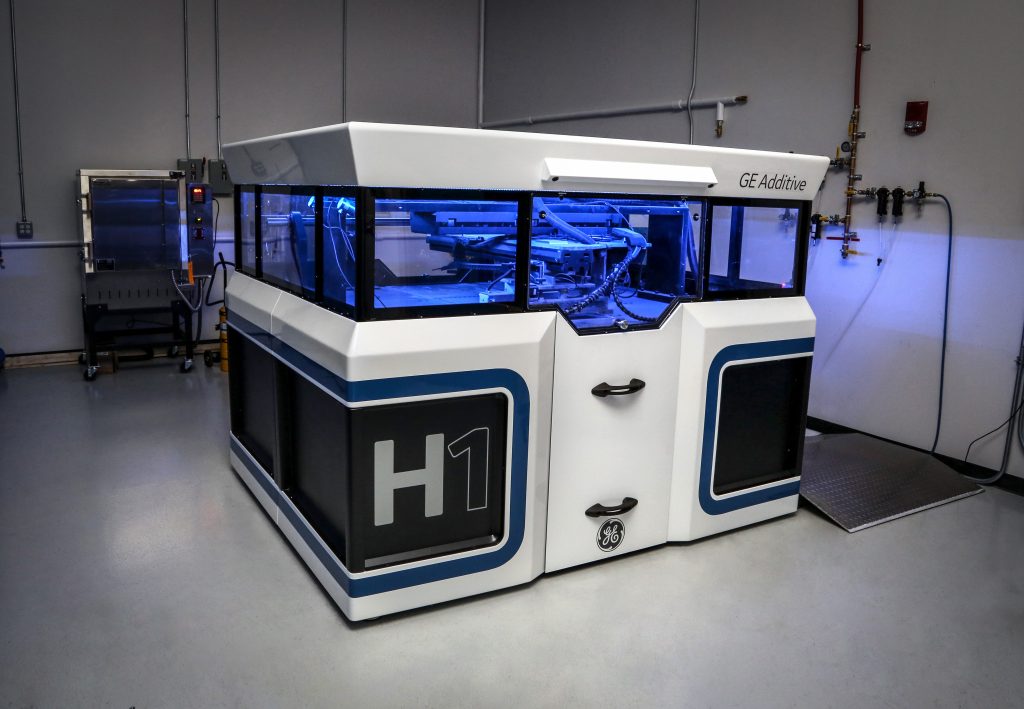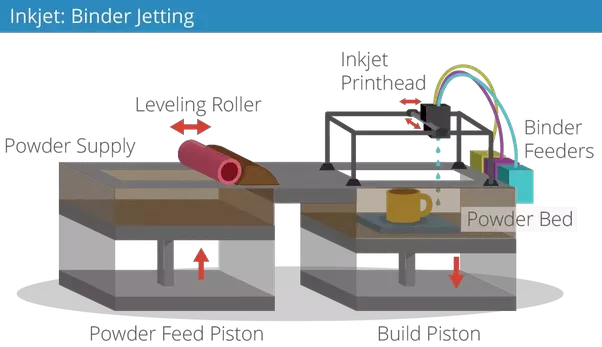Metal 3D printing is currently experiencing an influx of binder jetting based processes. Award winning technology from Desktop Metal and the likelihood that HP is developing a similar technology are just two examples of many methods highlighting the potential of metal injection molding (MIM) powder for 3D printing.
While technical specifications are sparse, it seems GE is also keen to get in on this trend.
Today GE Additive has released the first photo of its forthcoming binder jet 3D printer under project name H1. The technology inside the H1 is a process which the company believes is “faster than any binder jet machine on the market today.”

Behind the fastest binder jetting process
Binder jetting processes use two materials – a powder base, and liquid binder. In the case of GE’s H1, the powder will initially use powdered alloys like stainless steel, nickel and iron. If the stock is MIM powder, it will be cheaper than other additive powder feed, and avoids the same particulate restrictions as required for methods like selective laser melting (SLM).
To build and object, metal powder is spread over the build platform with a roller. The liquid binder is then selectively added to adhere the particles, and the build platforms lowers slightly for the next layer. Another layer of loose powder is rolled over the platform, which also acts as support, and binder is added again in sequence.
At the end of the build, unbound powder is removed to leave a green part. This is then sintered in a kiln to remove polymeric qualities – a process that also substantially shrinks the parts. The post-sintering process also gives binder jetted metals a strength advantage over some other 3D printed metals.

More for aerospace and automotive
Mohammad Ehteshami, Vice President and General Manager of GE Additive, says that the company has noted “great demand for binder jet technology in the aerospace and automotive sectors.” Adding new technologies to the company’s existing SLM/EBM portfolio is part of GE’s grand plan for the additive manufacturing industry that has so far seen a combined investment of over $1.6 billion.
The first production of GE’s H1 3D printers are expected for shipment mid 2018 following further development earlier in the year.
In closing Ehteshami adds, “We have a progressive approach to innovation and product development. I challenged the team to develop this new machine in 55 days. They came in ahead of time with the process of concept to first print taking only 47 days.”
Nominations for the second annual 3D Printing Industry Awards are now open. Make your selections now.
To be the first with all the latest 3D printer releases, subscribe to the free 3D Printing Industry newsletter, follow us on Twitter, and like us on Facebook.
Featured image shows a metal GE logo at the GE Additive booth formnext 2017. Photo by Beau Jackson



